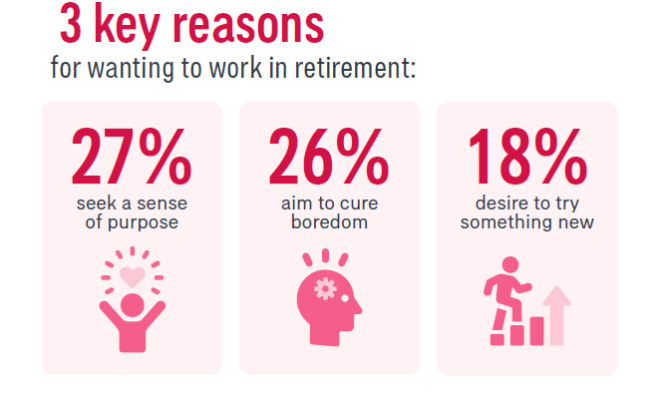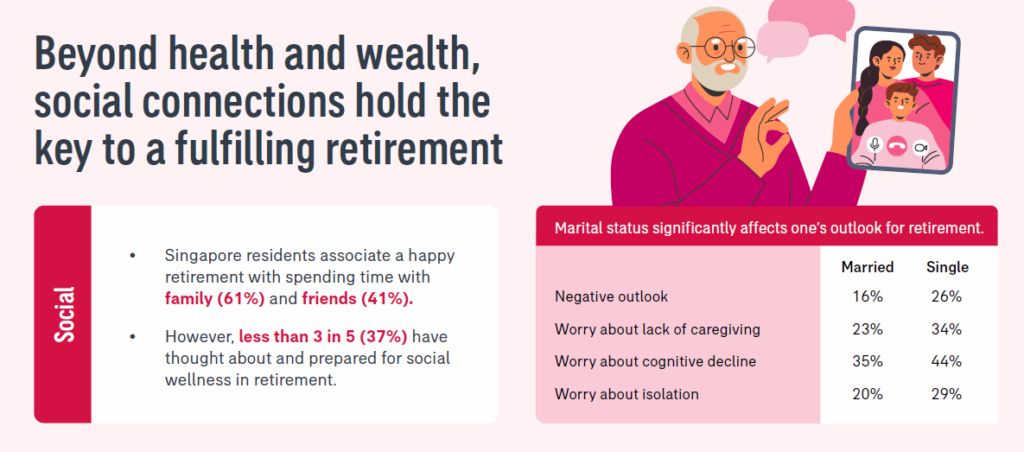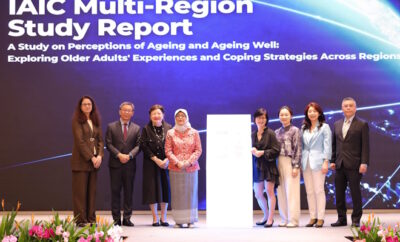
The Gen XY Lifestyle
The New Retirement Dream: Purpose, Not Puttering. But Are You Really Ready?
Forget the old image of retirement being all quiet naps and endless holidaying.
Singaporeans are now aiming for reinvention and purpose, but a new study reveals a serious gap between that ambition and the reality of their planning.
If you’re a Gen X-er looking ahead or a savvy Gen Y-er getting your future sorted, the idea of retirement has probably changed from what your parents had in mind. It’s no longer just about stopping work; it’s about starting a new chapter.
This shift is confirmed by the latest AIA Live Better Study, which found that retirement is increasingly seen as a period of reinvention and purpose. This ties in neatly with Singapore’s national push for more active ageing.
However, there’s a problem: we’re dreaming big, but planning small.
The study shows a slight dip in overall holistic wellness compared to last year , highlighting persistent challenges across our physical, mental, financial, and social well-being. Only one in two (forty-seven percent) of residents feel optimistic about achieving their desired retirement lifestyle.
The Purpose Paycheck: Why We Still Want to Work
If you plan to work after you retire, you’re definitely not alone.
Over half (fifty-five percent) of Singapore residents plan to keep working upon retirement, whether that’s part-time, full-time, or starting a new business.

But here is the most interesting bit: they aren’t doing it just for the money.
Less than three in ten (twenty-eight percent) are working purely for financial reasons. Instead, the top motivators for post-retirement work are:
- Seeking a sense of purpose (twenty-seven percent)
- Aiming to cure boredom (twenty-six percent)
- Desiring to try something new (eighteen percent)
As Irma Hadikusuma, Chief Marketing and Healthcare Officer at AIA Singapore, points out, retirement is now seen as a phase for personal growth and continued contribution, not just a cessation of work.
The Unsung Hero: Why Social Connections Matter

Unsurprisingly, financial stability and physical health remain the ‘cornerstones’ of a happy retirement. Only one in two (fifty percent) claim to be financially stable , and a major worry is managing healthcare expenses (fifty-four percent).
But the big, often-missed finding, is the power of social wellness.
A happy retirement is strongly linked to spending time with family (sixty-one percent) and friends (forty-one percent). Yet, only two in five (thirty-seven percent) have actually thought about preparing for their social wellness.
This is especially critical for single individuals:
- Single residents are more worried about a lack of caregiving arrangements (thirty-four percent versus twenty-three percent for married individuals).
- They express greater concern about becoming isolated (twenty-nine percent versus twenty percent for married individuals).
This means singles are planning more actively for part-time work and community engagement to maintain connection and independence. Social connections are a fundamental pillar, not just a bonus.
The Readiness Gap

While a majority (seventy percent) have started planning for some aspect of retirement , a significant number are neglecting crucial areas:
- Twenty-one percent have not thought about how to maintain social wellness.
- Twenty percent have not considered the possibility of being alone (without a spouse and children).
- Seventeen percent have not thought about long-term care.
- Fourteen percent have not considered insurance coverage for retirement.
The message is clear: if you’re in your 40s (the age group with the most negative financial outlook) , you need to turn those aspirations into a plan. A purposeful retirement requires solid groundwork, not just a good imagination.
Graphics credit to AIA Singapore






